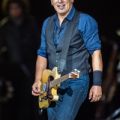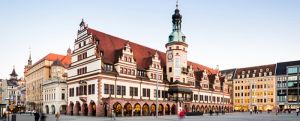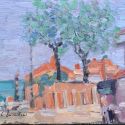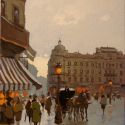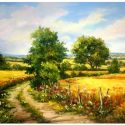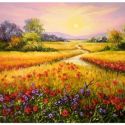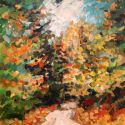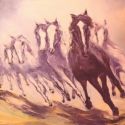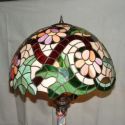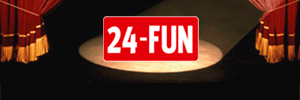Paul Joseph Constantin Gabriël, Dutch painter born on 05 July 1828, son of Paulus Joseph Gabriël [11 Jul 1784 – 01 Jan 1834].
Gabriël received his first training not from his father, who died when he was only five years old, but at evening classes at the Amsterdam Academie (1840 and 1843). Later he was instructed by the architect Louis Zocher [1820–1915], and about 1844 he was sent to the private art school of the landscape painter Barend Cornelis Koekkoek in Cleves. However, after a year he returned to the Netherlands because Koekkoek thought he had too little talent to be a painter. Gabriël then went to live briefly in Haarlem, where he copied works in the Welgelegen pavilion, which then housed the nation’s modern art collection, and earned his living drawing portraits. In Haarlem he met Anton Mauve, with whom he was to have much contact later on.
In 1853 Gabriël went to Oosterbeek, the Dutch Barbizon. This was a period of intense activity and discussion with other painters, including Gerard Bilders. From 1856 to 1859 Gabriël lived in Amsterdam, where he suffered severe financial difficulties because his paintings failed to sell. In 1860 he moved to Brussels and stayed there with brief interruptions for the next 24 years. In Brussels he received support and advice from the Dutch artist Willem Roelofs, who had been living in the city since 1847. In 1866 Gabriël became a member of the Société Belge des Aquarellistes, and in 1867 he married. One well-known work dating from his early years in Belgium is In Groendendaal near Brussels (1867), which was the first painting to show his artistic independence from Jean-Baptiste-Camille Corot and the Barbizon painters, as well as from the Dutch artists working in the Romantic tradition.
inchide 
Newsletter
Stay tuned with arts. Subscribe to Artline art news send directly to your mailbox by artLine.ro

